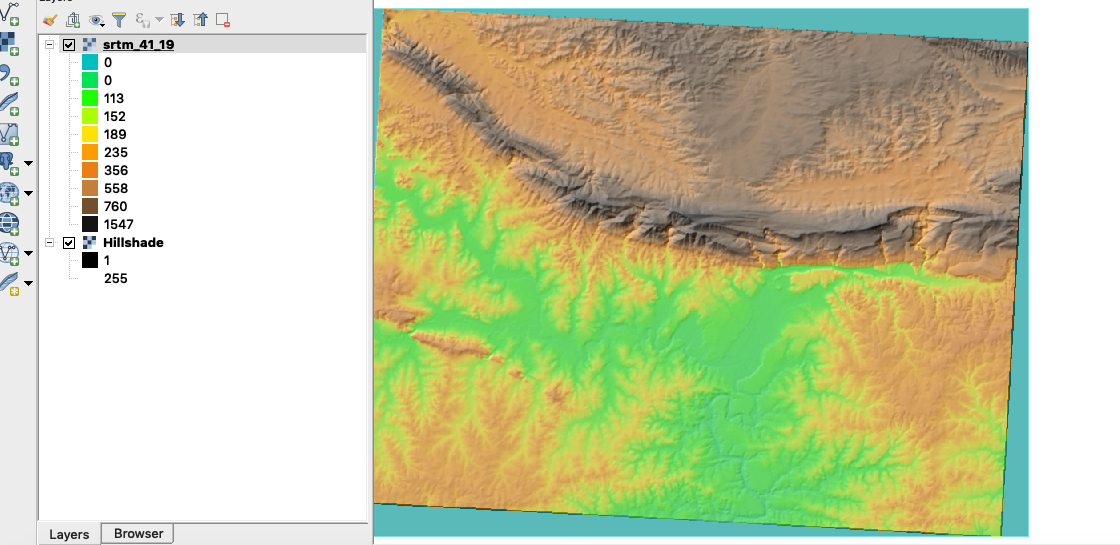
Colour Ramps for raster data in Context
“Colour ramps are used for vector and raster symbology when you need to show continuously varying colours along a colour scale”
In this module, we will explore colour ramps. QGIS ships with a number of pre-defined colour ramps, but you can also create your own. Colour ramps let you express numeric changes in a way that is easy for your eyes to interpret.

You try:
Goal: To learn where to find additional colour ramps in QGIS and where they can be used.
- Load the raster DEM from the exercise data.
- Click on the Raster Menu >> Analysis and run the hillshade algorithm.
- Place the hillshade underneath the DEM.
- Use a pseudocolour renderer for the DEM.
- Create a new colour ramp using 'wiki-tuxnux'
- Make the DEM partially transparent
| Name | Expectation |
|---|---|
wiki-tuxnux ❗ |
|
Palette source ❗ |
cpt |
Group ❗ |
Top of the CPT pallettes |
Palette ❗ |
Elevation |
Classes ❗ |
10 |
Mode ❗ |
Quantile |

More about color ramps for raster data.
QGIS uses the same colour ramp system wherever colour ramps are used including:
| Name | Value |
|---|---|
| Raster | Pseudocolor renderer |
| Raster | Unique values renderer |
As well as using one of the many built-in colour ramps, you can also create your own colour ramps using the ramp editor.
Be careful when using colour ramps - colours can make information easy to understand if used wisely, but the human eye cannot easily interpret subtle colour differences so using many classes often won't improve information handover.
If you want a comprehensive collection of colour ramps, install the Colour Ramp Manager plugin and install the full CPT ramp collection.

Check your knowledge:
-
A colour ramp is:❗
- Useful for displaying categorised data
- Useful for displaying continuous data
- Nice for making rainbow patters on your maps
-
When working with a ramp it is best to:❗
- Have as many classes as possible
- Have as many similar classes as possible
- Have a few divergent classes

Further reading:
-
Towards-better-gradients: https://anitagraser.com/2016/04/03/towards-better-gradients/ ❗
Download the sample data for the lesson.
